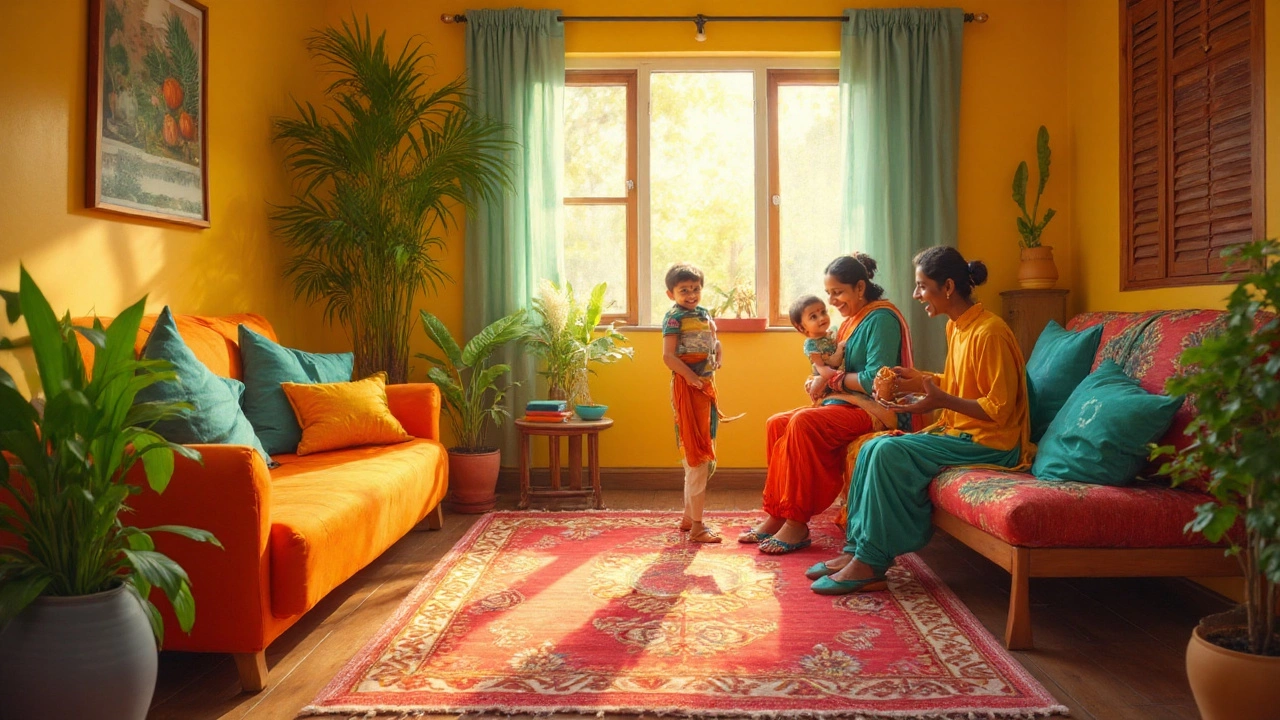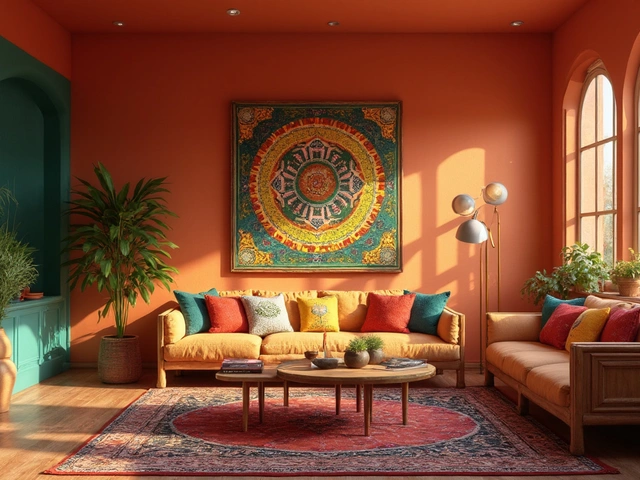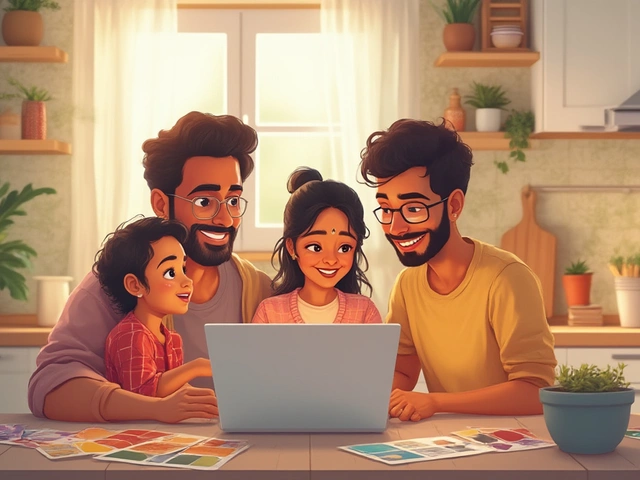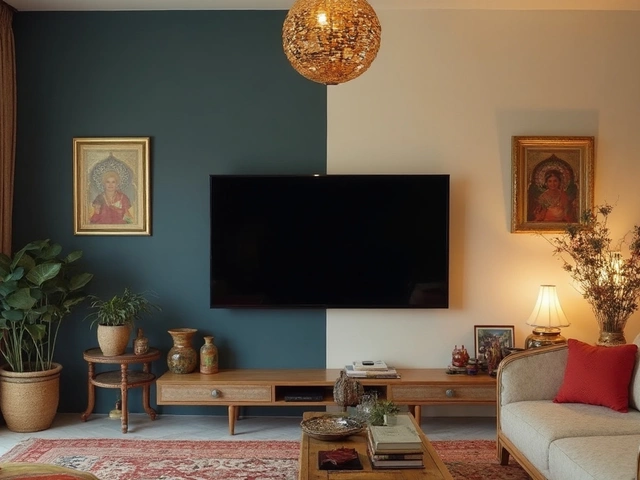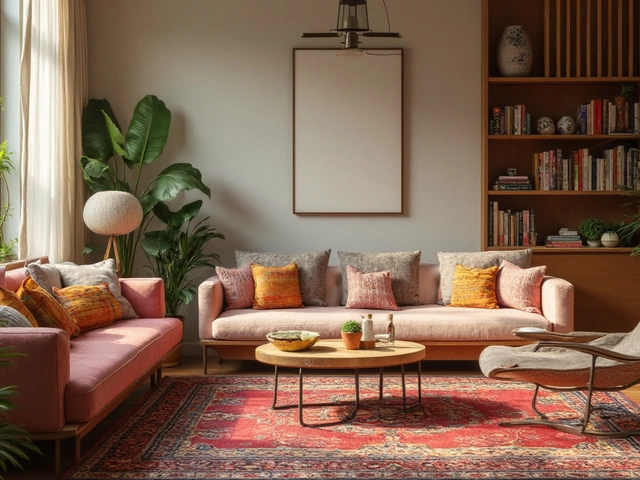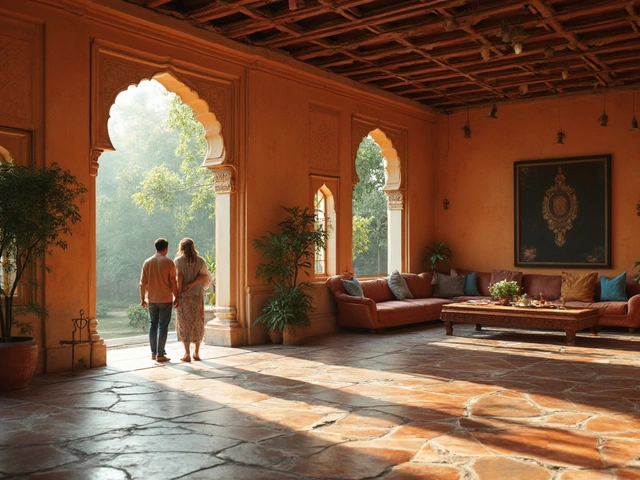You can walk into a room and just feel it. Sometimes the vibe is uplifting, inviting, full of life—other times, you’re itching to get out and gulp fresh air. That feeling isn’t just about the furniture or the view. Color is quietly pulling the strings. Big brands pay insane amounts for color consultants. Sports teams argue about color jerseys for a reason. Yet, at home, we avoid painting the wall yellow because Aunt June said it’s “too much.” Why do some colors leave us smiling while others make us want to binge chips in bed? It’s not magic. It’s color psychology. And a few shades really do supercharge a space with positive energy.
The Hidden Power of Color: Facts You Didn’t Know
Let’s start with what the science crowd says. Paint companies, like Behr and Sherwin-Williams, track color data like some folks track football stats. Their trend forecasts are based on thousands of home surveys. In one 2023 poll, Behr found that over 62% of people said painting a room a fresh, lively color instantly made them feel happier at home. But it goes even deeper. Studies show certain colors impact your heart rate, appetite, and even brain activity.
Take yellow. It’s not just for smiley faces. Exposure to yellow can boost serotonin in your brain—aka the ‘happy hormone.’ Ever noticed kitchens with yellow accents tend to feel greener, brighter, and a little bit more fun? That’s not an accident. Look at fast-food interiors. Brands splash red and yellow everywhere. There’s a method to the madness: red grabs attention and stimulates appetite, yellow wakes up your brain. Some Italian pizzerias actually saw customer satisfaction scores go up (by up to 18%, per a 2022 restaurant study) just from changing their wall color to golden yellow. Not convinced? Research out of the University of British Columbia discovered students exposed to blue performed better on creative problem-solving tasks—by nearly 19% more than those in drab gray rooms.
Green is another champion and not just because the eco crowd loves it. Green is the color of life—think trees, plants, rolling hills. Your brain connects green with renewal and growth. A 2021 study measured stress recovery and found hospital patients in green-painted recovery rooms left sooner and reported less pain than those staring at beige. Businesses have caught on. Tech start-ups in Silicon Valley commonly use green break rooms to help employees recharge creatively. The ‘green room’ tradition in theater isn’t just a random name—it’s about relaxing nerves before a big performance.
Here’s a handy breakdown of color effects, linking each shade to actual feelings and changes:
| Color | Effect on Mood | Best Used In |
|---|---|---|
| Yellow | Lifts spirits, energizes, sparks hope | Kitchens, entryways, home offices |
| Green | Calms, restores, encourages growth | Living rooms, bedrooms |
| Blue | Soothes, inspires creativity, lowers stress | Bathrooms, bedrooms, creative studios |
| Orange | Motivates, encourages interaction | Dining rooms, playrooms, home gyms |
| Red | Excites, boosts energy (but can overwhelm in large doses) | Accent walls, social spaces |
| Purple | Creates luxury, sparks imagination | Bedrooms, meditation spaces |
White gets a lot of hype, but it’s actually a double-edged sword. Too much cold white can feel sterile or clinical (think hospital corridor). The trick is to pair it with a warmer undertone, or blend in plush accents and live plants. It’s the sidekick more than the hero.
That’s a lot to take in. But here’s the thing: color effects are universal enough to work in nearly every home, but not every color fits every personality. If you’re restless in yellow, don’t force it. Your gut knows. It’s about finding what lifts YOUR mood.
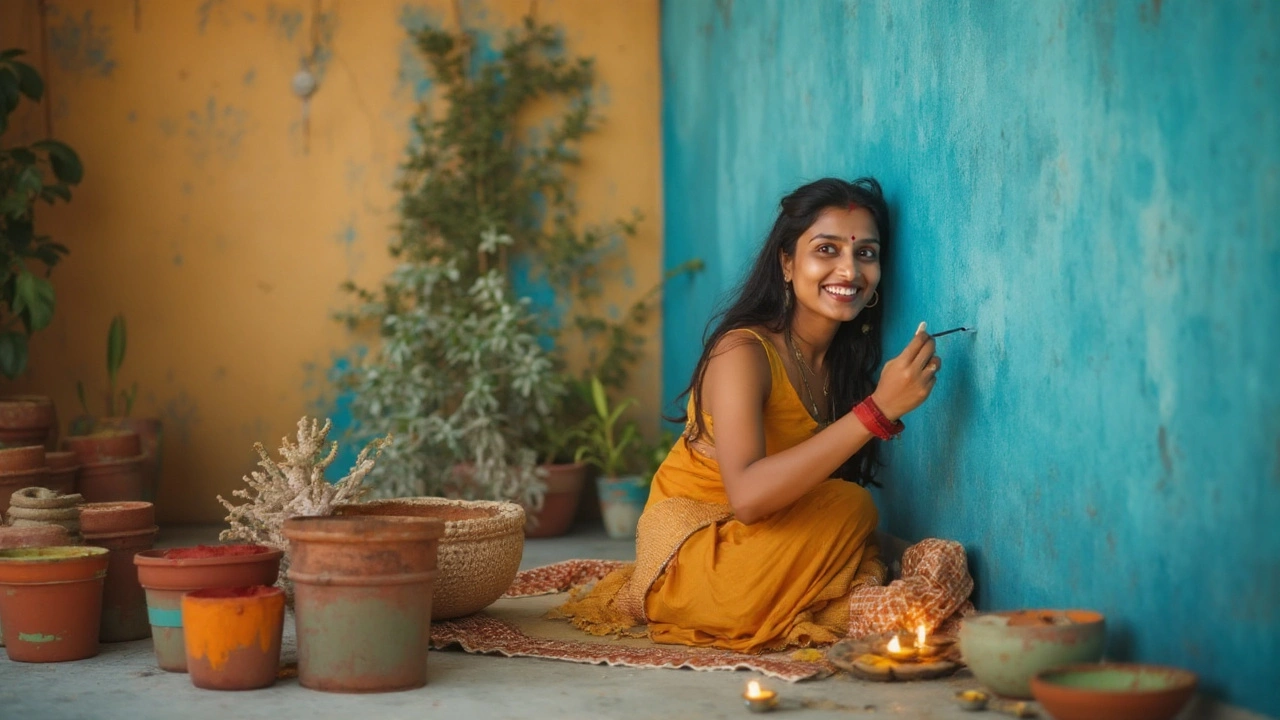
Real-World Ways to Capture Positive Energy Through Color
Let’s get into how you can actually use color to pump positive energy into your home without a wild paint spree. Not everyone wants to live inside a pinball machine. It starts with small swaps, not big commitments.
Toss some color into your day with throw pillows, vases, candles, or wall art. My partner Lila is obsessed with bringing home bright cushions—last week, orange and teal graced the couch, and suddenly the place felt more awake. Swap out beige lampshades for soft sky blue or upcycle old furniture with a coat of cheerful green. It’s low-stakes, but the results are big.
Don’t underestimate accent walls. Grab a can of sunshine yellow or soft coral and go bold behind your bed or in a breakfast nook. Try it first with peel-and-stick wallpaper if you’re scared of commitment. Gallery walls also let you play with color and swap pieces out when your mood shifts.
Natural light ups the ante. A yellow cushion in a sun-drenched window? Instant mood boost. Greens beside living plants double up on positive vibes. It’s a psychological two-for-one—the color calms you, and the plants clean the air.
If you share a space, ask everyone which colors they find uplifting. Turns out, my own kids love blues and purples, while I’m a diehard fan of grassy greens. We settled on a living room splash in sage green (warm, not hospital green) that everyone loves. No arguments at dinnertime, either. Coincidence? Maybe, but I doubt it.
Small rooms can stretch with light aqua or pale yellow. The color reflects light and creates the sense of space. If you love deeper shades, save them for rooms you use at night—navy blue in a bedroom can feel like a calming nighttime hug.
Not everyone wants bold. If you’re skittish about color, sneak it in through flowers, art, or even colorful books on your shelf. One trick: hang a mirror opposite a colored element to double the punch. And don’t worry about trends. Trendy colors might be fun for yearly updates, but lasting positive energy comes from what makes you actually smile after a tough day.
Check the emotional temperature in your workspace. If you feel drained or grouchy, try swapping a bland gray for a cleaner blue or soft green desk mat. Even your screensaver can work magic—a photo with clear turquoise water or sunlit fields does more than fill pixels. Brain imaging studies revealed that just five minutes looking at calming blue or lush green images lowered anxiety scores by up to 14%.
- Use color temporary: Test with removable decals, pillowcases, or tablecloths.
- Read the light: Bright colors in natural light look vivid; in shadows, lean softer.
- Mix but don’t overload: Two main colors with a neutral base is energizing but not chaotic.
- Anchor with nature: Plant green alongside olive or forest walls – the real and painted greens play well together.
- Follow your gut: If you feel good wearing a color, chances are you’ll like it at home, too.
If you rent or fear color, remember, not everything needs to be permanent. Some folks transform whole rooms just by rolling out a bright rug or hanging new curtains. Color energy isn’t just about paint buckets; it’s about being intentional with every accent.

Color Throughout the Year—and How Positive Energy Changes
Here’s the fun bit: the best color for *positive energy* might actually shift as the seasons change, and even along with your routines. During winter months when the sun hides out, people in northern climates swear by infusing their spaces with warm orange, yellow, and golden red tones. It’s like bottling sunshine for a gray morning. If you work from home, a yellow “focus corner” can do wonders during the 3 p.m. slump. It’s not just a gimmick—one Scandinavian study in 2022 found households with warm-colored dining spaces reported less winter lethargy.
Summer calls for cool, bright, and light shades. Blue and fresh turquoise calm overheated minds. The colors don’t just look chill; they can actually make rooms feel two to four degrees cooler than they are, thanks to the way our brains read cool hues.
Autumn? Bring in terracotta, rust, or deep olive to ground the energy and make the space feel cozy. It’s basic psychology—when leaves outside turn copper, inside colors that echo that change mean your body feels more at home.
Holiday decorations are a great excuse to test the emotional power of color without a big investment. People often report happier moods just from hanging multicolored twinkle lights or tossing a few red-and-green throws into the mix.
The time of day matters too. Spaces flooded with morning light can handle bolder color. For rooms you mostly use at night—like dens or bedrooms—stick to softer, more restful shades unless you purposely need amping up. I tried a bright orange sofa in my den once. Great for parties, terrible on sleepless nights. Lesson learned.
- Morning, sun-filled rooms: Go bold (yellows, greens)
- Evening, low-light spaces: Use dusty blues, muted earth tones
- High-energy use (gym, kitchen): Red, orange, bold yellow accents
- Relaxing, private spaces: Soft sage green, sky blue, gentle purples
If your energy feels off, look at the colors you’re living with before blaming the weather or your neighbor’s barking dog. Sometimes the fastest fix to bad vibes isn’t a life overhaul, but switching out a single tired color for one that sparks actual joy.
The right shade wakes you up, calms you down, motivates you to tackle emails, or just makes you want to invite friends over. You’re not locked into one ‘happy’ color for life. Play around, test, and notice how your mood adjusts. Color makes a real difference. And when your home feels more alive, so do you.
